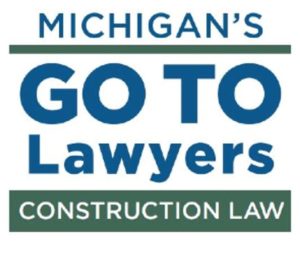On Friday, July 14, 2016, the Michigan Supreme Court issued an opinion addressing what standard must be applied by courts reviewing noncompetition agreements in business-to-business transactions. The case, Innovation Ventures LLC v Liquid Manufacturing LLC, involved a noncompetition agreement found in contracts between Innovation Ventures, LLC (“Innovation”), the maker of “5 Hour Energy” drinks, and companies that had been hired to bottle, design, manufacture, and install equipment to produce the liquid concoction. After terminating their contract with Innovation, the defendants produced and sold a product called “Eternal Energy,” a competitor to 5 Hour Energy.
The Oakland County Circuit Court originally dismissed the lawsuit. The trial court ruled that the noncompete agreement was an unreasonable restraint of trade, and therefore unenforceable. The Court of Appeals, in an unpublished Opinion dated October 23, 2014, upheld the trial court’s decision.
The Court of Appeals held that the parties’ contract – which included non-disclosure and noncompetition agreements – lacked consideration because it was signed a few years after the parties began working together, but less than two weeks before Innovation terminated the contract. The Court of Appeals also found that, because the contract was terminated so soon after it had been signed, the defendants “never received that which they were promised” to support their giving such a broad noncompete. More significantly, the Court of Appeals found that the noncompete was unreasonable, applying the standard used to consider the validity of noncompete agreements between an employer and an employee.
The Michigan Supreme Court granted leave to determine two issues: (1) whether the parties’ nondisclosure agreement was void due to failure of consideration, and (2) whether the noncompete provisions in the Termination Agreement and the Nondisclosure Agreement were reasonable, and thus, enforceable.
First, the Court noted that the parties’ contract expressly recognized either party’s right to terminate the agreement by providing fourteen days’ notice. The Court then noted that “[a] party seeking to void a contract on the basis of an event anticipated by the contract cannot claim failure of consideration.” Therefore, the Court reversed the Court of Appeals on the issue of whether there was adequate consideration to void the contract entirely.
Next, the Court focused on the question of what standard should be applied to noncompetition agreements found in commercial contracts between presumably sophisticated businesses. Noting that the Court of Appeals relied on a number of cases interpreting noncompetes in contracts between employers and their employees under §4a of Michigan’s Antitrust Reform Act (MCL 445.774a), the Supreme Court found that reliance inappropriate. Rather, the Court opined that the appropriate section of that Act to consider when analyzing cases arising between two businesses is §14 (MCL 445.784), which provides: “It is the intent of the legislature that in construing all sections of this act, the courts shall give due deference to interpretations given by the federal courts to comparable antitrust statutes, including, without limitation, the doctrine of per se violations and the rule of reason.” Thus, the Supreme Court looked to a number of federal court decisions, noting that they applied a “rule of reason” analysis to noncompete provisions in contracts between two commercial entities:
When applying the rule of reason, a court must “tak[e] into account a variety of factors, including specific information about the relevant business, its condition before and after the restraint was imposed, and the restraint’s history, nature, and effect.” (Cite omitted). The rule of reason has been articulated as
whether the restraint imposed is such as merely regulates and perhaps thereby promotes competition or whether it is such as may suppress or even destroy competition. To determine that question the court must ordinarily consider the facts peculiar to the business to which the restraint is applied; its condition before and after the restraint was imposed; the nature of the restraint and its effect, actual or probable. The history of the restraint, the evil believed to exist, the reason for adopting the particular remedy, the purpose or end sought to be attained, are all relevant facts. This is not because a good intention will save an otherwise objectionable regulation or the reverse; but because knowledge of intent may help the court to interpret facts and to predict consequences.
After deciding that the Court of Appeals applied the wrong standard, the Supreme Court found that there were questions of fact regarding whether the defendant had breached the termination agreement by producing competing products. Therefore, it remanded the case for the trial court to determine “whether the noncompete provisions in the parties’ Nondisclosure Agreement and Termination Agreement are reasonable under the proper standard, whether [one defendant] breached the Nondisclosure Agreement, and whether [another defendant] violated the Termination Agreement by producing products other than Eternal Energy.”
Many lawyers (and judges) facing issues involving the enforcement of noncompetes between employers and current or former employees under the Antitrust Reform Act anxiously awaited the Innovation Ventures ruling, anticipating that it might represent a sea change in the manner in which those agreements are enforced in Michigan. However, since by its terms Innovation Ventures is limited to business-to-business cases, it will not apply to the more routine situations that we (and the Business Courts) face most often (i.e., noncompetes found in employment agreements or arising after the sale of a business and its goodwill).
Innovation Solutions does, though, clarify that when two commercial entities enter into an agreement containing a noncompetition provision, courts reviewing that agreement must apply a “rule of reason” analysis to determine whether that provision is enforceable. Given the fact-specific nature of that analysis, it will be very difficult to obtain summary disposition without completing the discovery process. Thus, the costs associated with litigating the enforcement of commercial, business-to-business noncompetes will likely continue to be prohibitive in many (perhaps most) situations, prompting more business owners to turn to early facilitative mediation or other alternative dispute resolution mechanisms to control those costs and fees.
More Publications


